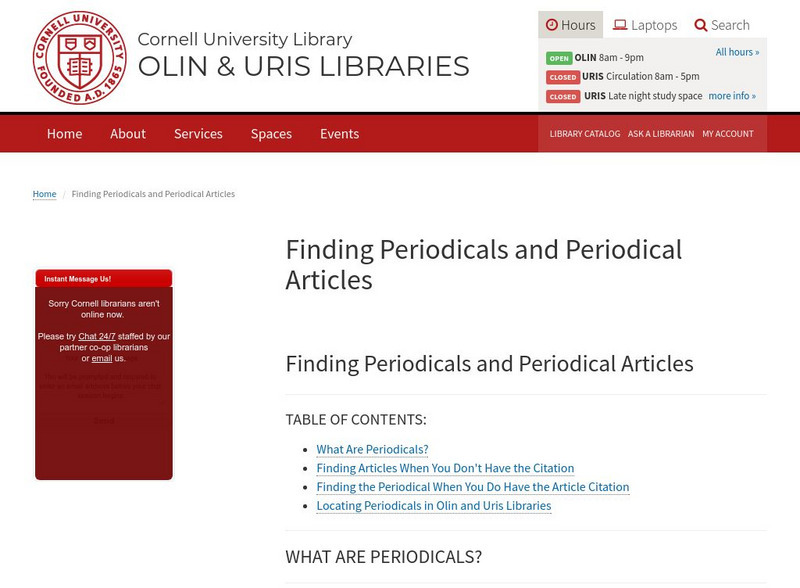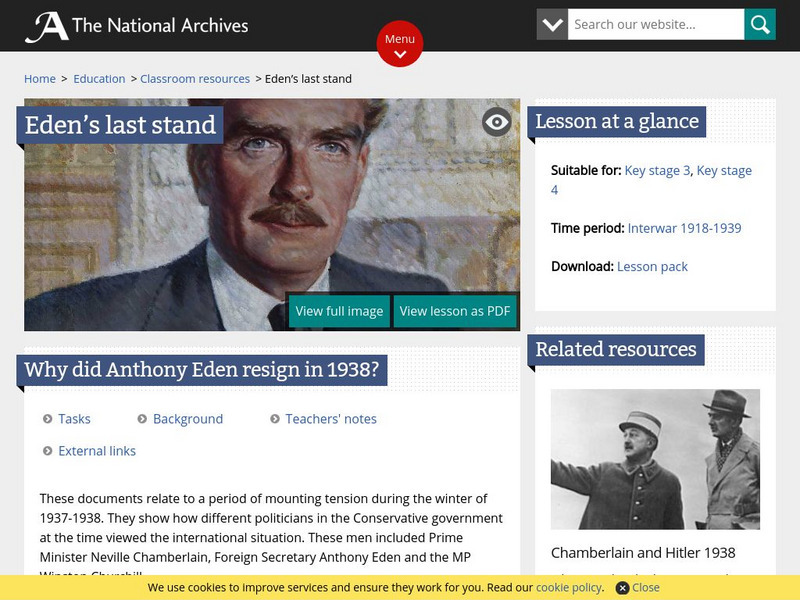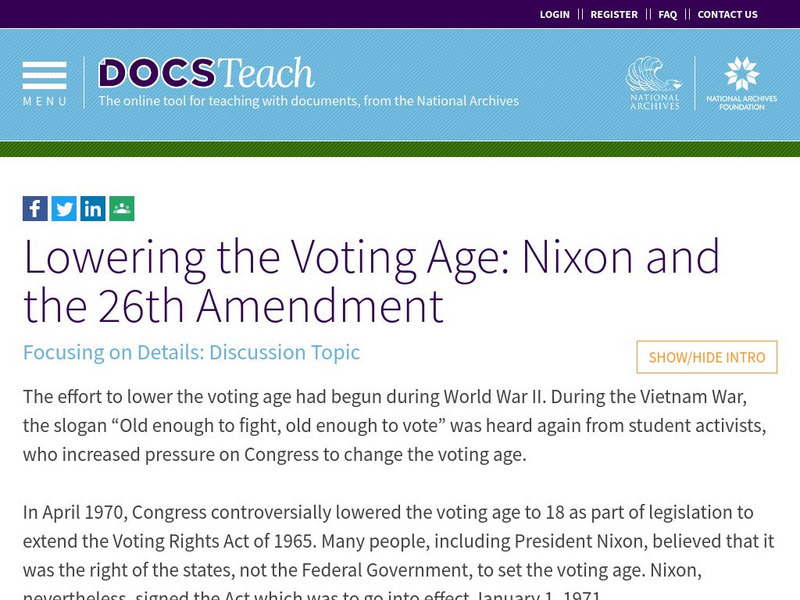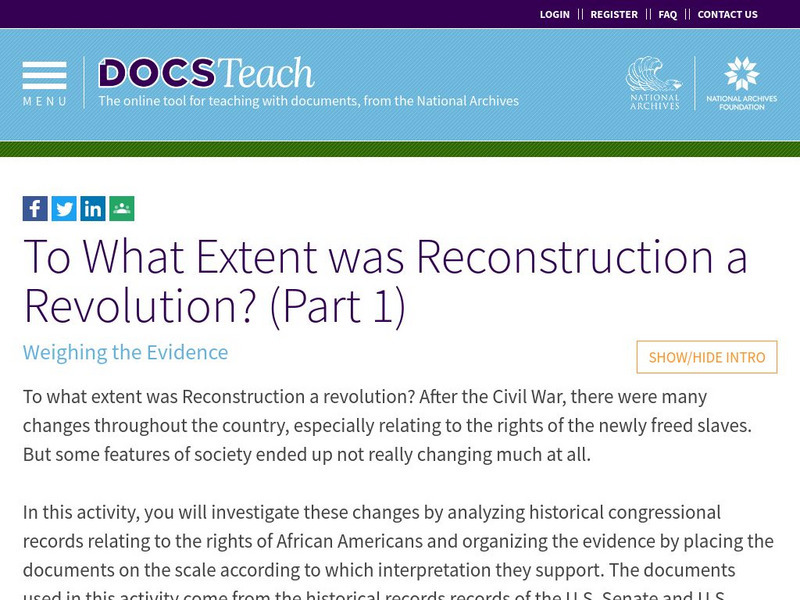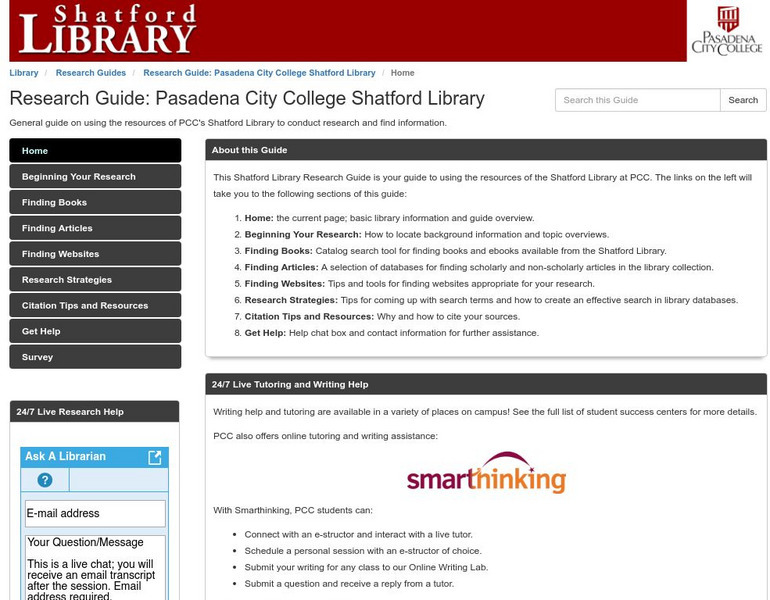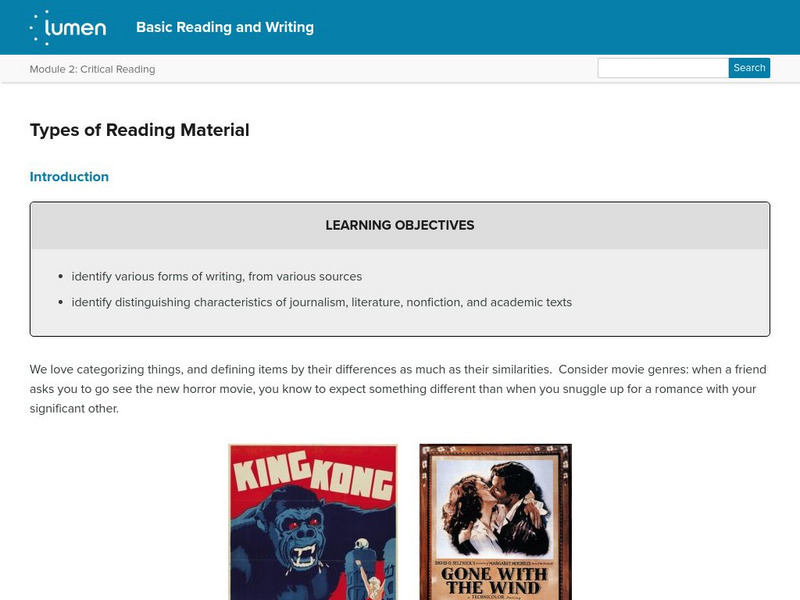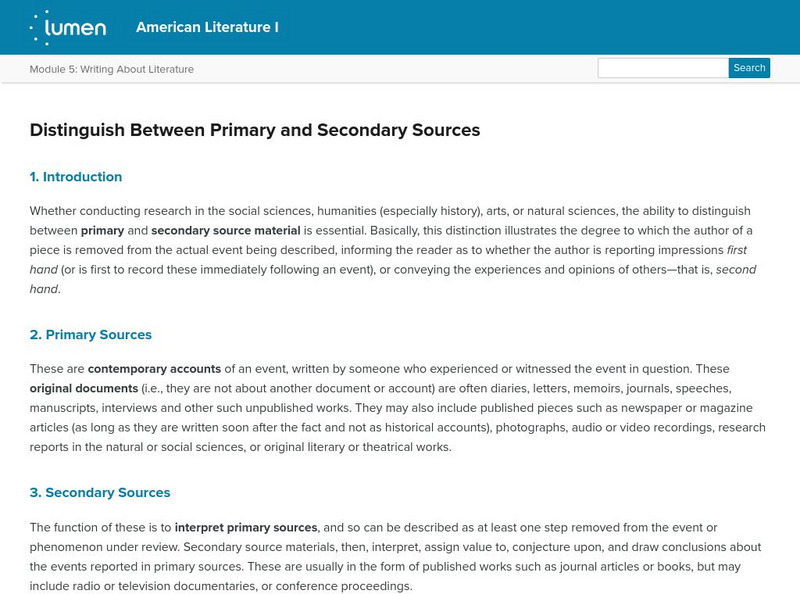Cornell University
Cornell University: Finding Periodicals and Periodical Articles
This resource offers a good look at periodicals as a source of information, and offers help for finding articles in a variety of situations.
National Archives (UK)
National Archives Learning Curve: How to Read a Document
This site is a lesson on Document Analysis using a letter written by Anthony Eden to PM Chamberlain in late 1937.
US National Archives
Docsteach: Lowering the Voting Age: Nixon and the 26th Amendment
This activity encourages young scholars to think critically about the history and importance of the 26th Amendment, that granted the right to vote to American citizens aged eighteen or older.
US National Archives
Docsteach: Documenting Key Presidential Decisions
In this activity, students will identify and analyze documents related to key presidential decisions. Through close examination of the documents, students will determine which president was involved. Students will then identify the...
US National Archives
Docsteach: To What Extent Was Reconstruction a Revolution? (Part 1)
Young scholars will examine several historical congressional records from the Reconstruction period to assess whether they show evidence that the Reconstruction period of American history should or should not be viewed as a revolution....
Other
Education Oasis: Compare and Contrast Graphic Organizers
This site contains several downloadable graphic organizers for comparing and contrasting reading topics.
TES Global
Tes: 'Ain't I a Woman?' and 'I Have a Dream'
[Free Registration/Login Required] In this series of activities, students will compare Sojouner Truth's "Ain't I a Woman?" speech with Dr. Martin Luther King, Jr.'s "I Have a Dream Speech". Students will look at literal and implied...
Pasadena City College
Pasadena City College: Shatford Library: Finding Articles
A step-by-step tutorial walks you through various ways of locating magazine and other periodical articles.
US National Archives
The National Archives Experience: Digital Vaults
This interactive website reveals primary sources for the National Archives vaults.
Sophia Learning
Sophia: Comparing and Contrasting Texts
Two PowerPoint presentations and a video [2:57] on comparing and contrasting literary and informational texts as well as how to write a literary analysis. Includes links to external resources.
Other
The Dbq Project
Teach students how to read with understanding, think straight, and write clearly using document-based questions.
Discovery Education
Discovery Education: Your Daily Learning Platform
An index to the Discovery Channel. Find resources for teachers, students, and even parents, from science experiments to math help, to virtual field trips.
University of California
History Project: Process of Historical Investigation [Pdf]
Outlines the process of historical investigation for students by teaching them the steps of research, analyzing evidence, and making interpretations.
Library of Congress
Loc: Does the Camera Ever Lie?
A presentation of how photographs were manipulated by photographers during the Civil War.
Texas Education Agency
Texas Gateway: Compare Narrative and Informational Texts: Practice 1
Evaluate changes in audience, purpose, and tone in two different texts.
Lumen Learning
Lumen: Critical Reading: Types of Reading Material
This lesson focuses on the types of reading material and their distinguishing features. It also included two videos including the key features from a newspaper story video and a video that defines scholarly articles.
Online Writing Lab at Purdue University
Purdue University Owl: Common Pitfalls of Primary Research
Learn about the common mistakes made when reporting primary research findings.
Lumen Learning
Lumen: Distinguish Between Primary and Secondary Sources
This lesson plan focuses on distinguishing between primary and secondary sources and evaluating them. It includes a list of questions to ask to determine the value of the sources under consideration.
Lumen Learning
Lumen: Using Databases: Periodical Indexes and Abstracts
This lesson plan focuses on using databases: periodical indexes and abstracts including the differences between periodical and journals, selecting the right number of keywords, and full-text databases.
Lumen Learning
Lumen: Finding and Evaluating Research Sources
This lesson focuses on how to find, evaluate, and use primary and secondary sources using printed and online sources. It provides practice writing activities such as examining the same topic through primary and secondary sources and...
Huntington Library
Huntington Library: Using Primary Sources in the Classroom [Pdf]
This lesson provides guidelines for teaching students how to use primary sources such as images, text, or statistics (e.g., maps, census). Includes a document analysis worksheet.
Other
Library of Congress: Teaching With Primary Sources
This website is an excellent resource for teaching with primary sources. This resource features Holocaust lessons, lesson plan strategies, and podcasts.
Roy Rosenzweig Center for History and New Media
Teaching History: Interactive Historical Thinking Poster (Secondary)
This is an interactive historical thinking poster. History is an argument about the past. Constructing a narrative about history involves several tasks: Analyzing Primary Sources, Examining Source Information,Using Evidence to Support...
W. W. Norton
W. W. Norton & Company: Lit Web: Types and Functions of Secondary Sources
Information about secondary sources as they are used when writing a research essay.


